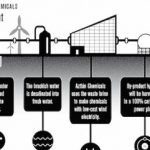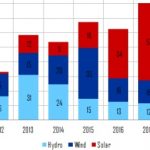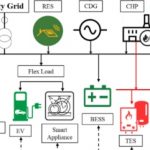How will China integrate its growing Variable Renewable Energy generation and create a nationwide energy system that avoids the risks of curtailment, stranded assets and blackouts? A good place to start is to learn from Europe. Helen Farrell at ECECP summarises their report that uses the European experience to model scenarios for China. China’s key challenges is that its power market lacks an effective auxiliary service market, a capacity market, … [Read more...]
How to keep Wind and Solar profitable as its electricity gets cheaper
Success can cause problems. As wind and solar penetration increases the electricity it generates gets cheaper. If it stops being profitable we’ll stop building it, thus endangering our emissions-free goals. Dev Millstein at the Lawrence Berkeley National Laboratory summarises their research paper that looks at how market value changed over time at 2,100 utility-scale power plants across major power markets in the U.S., using 2019 data. It’s clear … [Read more...]
“Green” chemical plants that ramp up and down with wind, solar
One solution to variable renewables is to create customers that have no problem with ramping up and down production along with the power. In fact, when the wind and solar is producing too much power for the grid it can be bought very cheaply, making intermittent customers very happy. Jim Conca describes a new design for a Chlor-Alkali Chemical Plant that can “idle” without critical components of the plant degrading – the main reason for a plant … [Read more...]
China’s 2019 electricity generation reviewed as its next 5-year plan is drafted
Simon Göss breaks down the totals and additions for electricity generation in China. In 2019 the total reached 7,325 TWh (more than twice Europe’s) after adding 330 TWh (more than half Germany’s total). Of that 330 TWh, 120 TWh came from thermal (90%+ coal). But the numbers were dominated by renewables (hydro, wind, solar) which added almost 160 TWh. Though that’s the third year of declining renewables additions, wind and solar curtailment is … [Read more...]
Multi-energy “island” Microgrids can increase grid resilience
As the number of different technologies producing power and providing storage increases, the grid is getting complicated. The best way to make it resilient against outages is therefore changing. The traditional way is to shut down the failing plant, leaving the rest of the grid to cope as best as it can with the change in voltage and frequency. Xi Zhang at the Energy Futures Lab, Imperial College, describes the research looking at multi-energy … [Read more...]
Overbuild solar: it’s getting so cheap curtailment won’t matter
Avoiding curtailment made sense when solar generation was extremely expensive: don’t build solar beyond what you can store. However, that means solar must always wait for storage costs to decline and capacity grow. But with solar prices plummeting it can make economic sense to overbuild it, say Richard Perez, University at Albany, and Karl Rabago, Pace University. Oversized solar will deliver more energy in low light and reduce the need for … [Read more...]
Solar intermittency: upbeat “annual” carbon reduction estimates miss the “hourly” reality
There is a maximum speed at which solar capacity can expand. You know you’ve passed it when insufficient storage means solar curtailment, or selling the daytime excess means curtailment of other clean energy generators. As solar grows, so too will this problem. Vincent Xia, at the Precourt Institute for Energy, Stanford University, reports on a new Stanford study which says emissions predictions are not taking this into account, thus … [Read more...]








